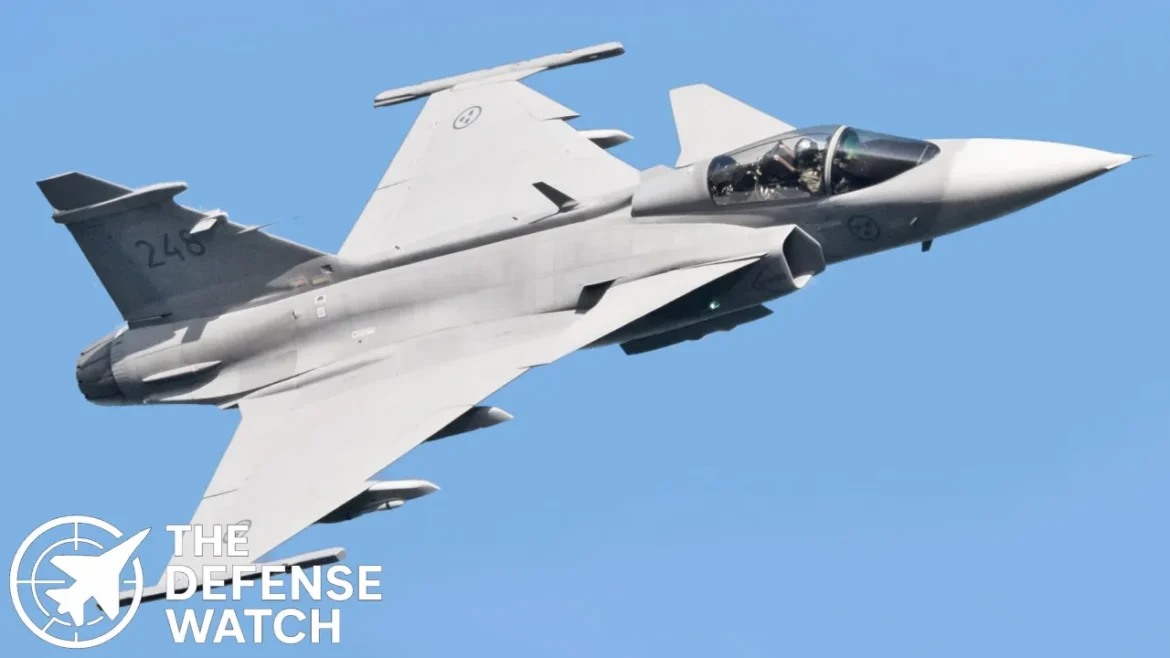Saab Prepares for Potential Surge in Fighter Jet Production
Swedish defense manufacturer Saab AB has announced it is ready to ramp up production of its flagship Gripen multirole fighter jet should a long-anticipated export agreement with Ukraine move forward. The deal, still under negotiation, could represent one of Sweden’s largest-ever defense exports and mark a significant step in Europe’s efforts to bolster Ukraine’s air power amid its ongoing war with Russia.
Saab’s leadership has hinted that the company could double its annual Gripen output — from roughly 20–30 aircraft per year to as many as 60 — if the contract is finalised. This move would not only support Ukraine’s modernization of its air fleet but also signal Europe’s readiness to meet wartime production demands with industrial agility reminiscent of Cold War mobilization levels.
While neither Saab nor Swedish defense officials have disclosed precise figures, the discussions reportedly include the supply of Gripen C/D and possibly E variants, the latest iterations of Sweden’s agile, cost-efficient fighter platform.
The Gripen: A Fighter Built for Versatility and Affordability
The JAS 39 Gripen, first introduced in the 1990s, was designed to give smaller air forces a capable, affordable alternative to heavy twin-engine fighters like the F-15 or Eurofighter Typhoon. Known for its short takeoff capability, advanced avionics, and low maintenance requirements, the Gripen has earned a reputation as one of the world’s most efficient fourth-generation combat aircraft.
The newer Gripen E/F variant incorporates a powerful GE F414 engine, advanced AESA radar, extended range, and open-architecture software that allows for rapid upgrades — a feature that appeals strongly to modern air forces looking to future-proof their fleets.
Ukraine, which has relied on aging Soviet-era MiG-29s and Su-27s, is seeking Western aircraft that can be rapidly deployed and easily maintained under battlefield conditions. The Gripen’s rugged design and ability to operate from road bases make it a natural fit for Ukrainian defense planners.
Sweden’s Expanding Defense Role
Sweden’s posture as a neutral but increasingly assertive defense exporter has evolved sharply since Russia’s 2022 invasion of Ukraine. Now a member of NATO, Sweden is taking on new responsibilities in strengthening the alliance’s northern flank and integrating its defense industry into Europe’s collective security framework.
Saab has already expanded production capacity in recent years amid surging European defense spending. The company’s Q3 2025 financial report showed double-digit sales growth, driven largely by renewed demand for radar systems, missiles, and fighter aircraft. Saab’s leadership has indicated that production expansion for Gripen jets is “a strategic priority” aligned with Sweden’s long-term defense partnerships.
If the Ukraine deal is finalized, Saab could consider additional assembly lines or partnerships within Europe or even Ukraine itself — a move that would deepen industrial cooperation and create local job growth.
Strategic Significance for the U.S. and NATO
Strengthening Allied Air Power
For the United States and its NATO partners, the potential Saab-Ukraine deal is more than an export success — it’s a reinforcement of collective defense capability. By introducing a NATO-standard multirole fighter into Ukraine’s arsenal, the alliance effectively extends its operational reach eastward, enhancing interoperability and tactical flexibility across Europe.
Industrial Impact and Transatlantic Competition
While Saab’s expansion may not directly challenge American giants like Lockheed Martin or Boeing, it represents a maturing European defense industrial base — one less dependent on U.S. production capacity. As Washington faces domestic industrial bottlenecks and congressional budget constraints, Europe’s ability to independently produce advanced combat systems is becoming strategically valuable for NATO’s resilience.
The Gripen’s affordability could also appeal to smaller NATO members or nations seeking to modernize without committing to the higher costs of fifth-generation platforms like the F-35. This dynamic adds healthy competition within allied procurement, potentially pushing innovation and pricing flexibility across the transatlantic defense market.
The Broader Geopolitical Message
Sweden’s potential sale of Gripen jets to Ukraine would carry symbolic weight far beyond the aircraft themselves. It would mark the first time a non-U.S. NATO member directly supplies a major Western fighter platform to Ukraine, reinforcing European unity in the face of Russian aggression.
For Moscow, the move would likely be perceived as a strategic escalation — though one calibrated within NATO’s framework of support. For Kyiv, it would signify an industrial and political milestone: a shift toward permanent alignment with Western defense ecosystems.
Analysis: What This Means for the Future of Air Power
The Saab development underscores a broader shift in global air power philosophy. As nations confront extended conflicts and constrained budgets, the demand for cost-effective, maintainable, and interoperable fighters is rising. The Gripen’s model — modular design, multi-mission capability, and efficient logistics — mirrors what many smaller air forces are seeking.
For the United States, this trend could influence export strategies. While the F-35 remains dominant, future demand may hinge on flexible offerings, sustainment support, and training packages that match the Gripen’s affordability advantage. The U.S. defense establishment will likely watch Saab’s Ukraine deal closely as a case study in scalable, coalition-based rearmament.
Conclusion: Europe Steps Up
As Saab positions itself to meet new demand, Sweden’s defense industry is emerging as a cornerstone of NATO’s rearmament efforts. If finalized, the Gripen-Ukraine deal could redefine Europe’s role in supplying advanced combat systems during wartime — and demonstrate that Western air power is no longer anchored solely in American production.
For Saab, the next phase will be execution: scaling supply chains, securing skilled labor, and coordinating with NATO logistics. For Ukraine, it could mean a decisive leap in air defense capability. And for the U.S. defense community, it’s a reminder that allied industrial resurgence — once a distant goal — is now taking off at full throttle.


1 comment
[…] implications of Japan signalling readiness to defend Taiwan are profound both regionally and globally. For Japan, it marks a step toward a more active defence role beyond its own territory. For the […]